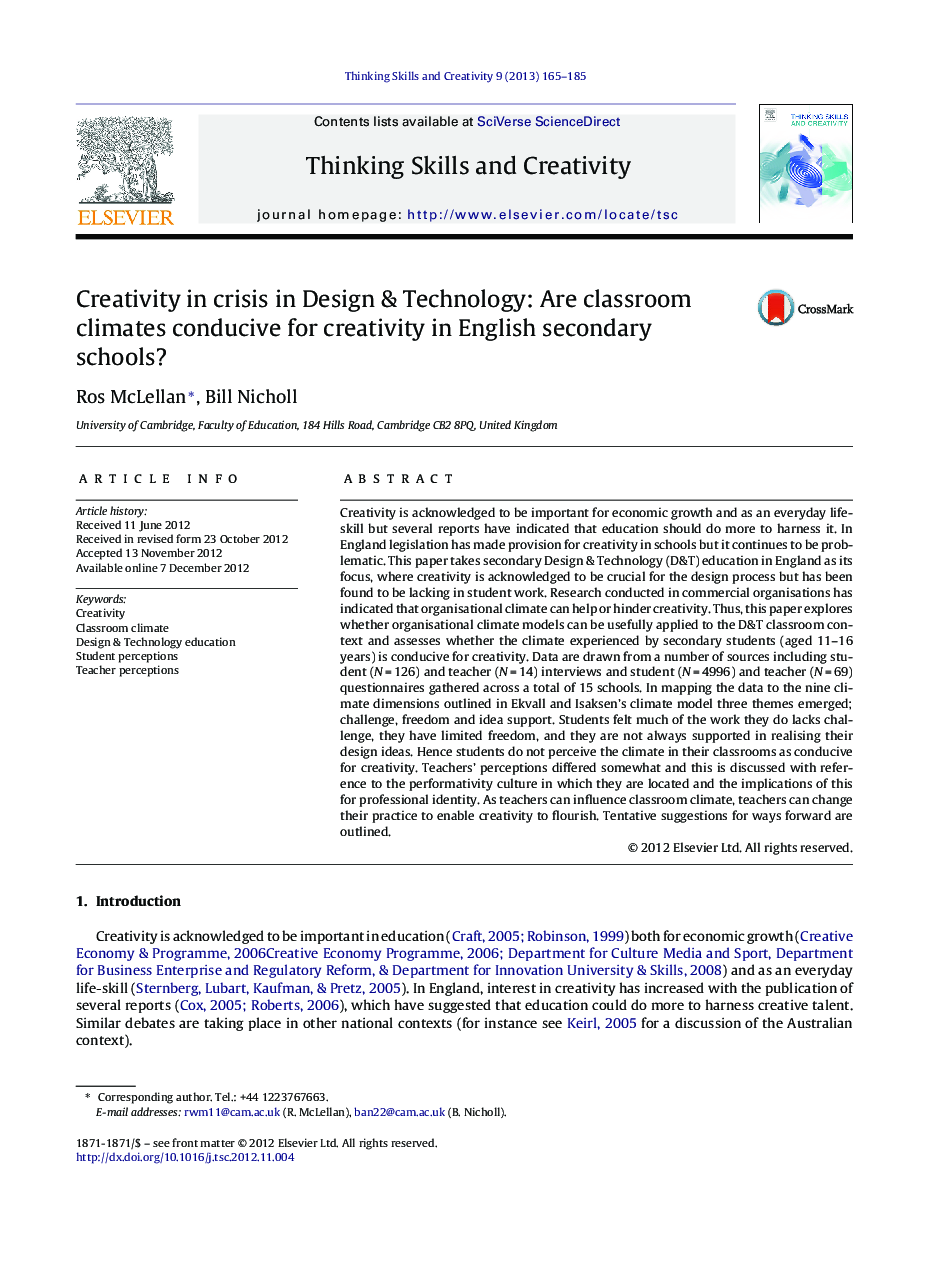| Article ID | Journal | Published Year | Pages | File Type |
|---|---|---|---|---|
| 375695 | Thinking Skills and Creativity | 2013 | 21 Pages |
Creativity is acknowledged to be important for economic growth and as an everyday life-skill but several reports have indicated that education should do more to harness it. In England legislation has made provision for creativity in schools but it continues to be problematic. This paper takes secondary Design & Technology (D&T) education in England as its focus, where creativity is acknowledged to be crucial for the design process but has been found to be lacking in student work. Research conducted in commercial organisations has indicated that organisational climate can help or hinder creativity. Thus, this paper explores whether organisational climate models can be usefully applied to the D&T classroom context and assesses whether the climate experienced by secondary students (aged 11–16 years) is conducive for creativity. Data are drawn from a number of sources including student (N = 126) and teacher (N = 14) interviews and student (N = 4996) and teacher (N = 69) questionnaires gathered across a total of 15 schools. In mapping the data to the nine climate dimensions outlined in Ekvall and Isaksen's climate model three themes emerged; challenge, freedom and idea support. Students felt much of the work they do lacks challenge, they have limited freedom, and they are not always supported in realising their design ideas. Hence students do not perceive the climate in their classrooms as conducive for creativity. Teachers’ perceptions differed somewhat and this is discussed with reference to the performativity culture in which they are located and the implications of this for professional identity. As teachers can influence classroom climate, teachers can change their practice to enable creativity to flourish. Tentative suggestions for ways forward are outlined.
► UK secondary students do not perceive the D&T classroom climate as supportive of creativity. ► Some students perceive that D&T work lacks challenge, they lack freedom and do not feel supported. ► Teacher perceptions differ to students. ► Teachers need to consult students about the climate in their classrooms and change practice. ► The creative climate model needs further development in educational contexts.
